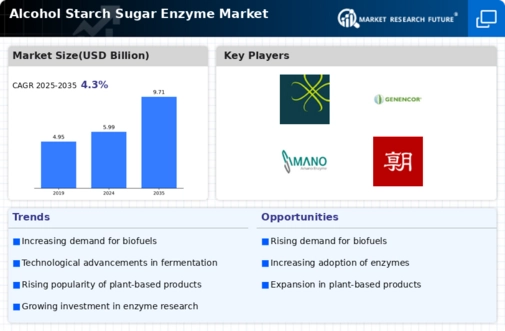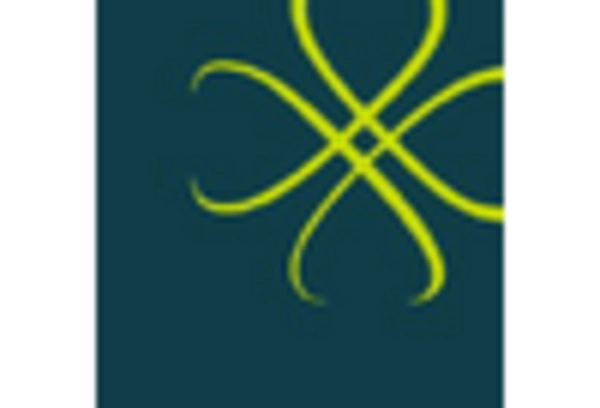Health and Wellness Trends
The Alcohol Starch Sugar Enzyme Market is influenced by the growing health and wellness trends among consumers. As individuals become more health-conscious, there is a rising demand for low-calorie and low-sugar alcoholic beverages. Enzymes play a pivotal role in the production of these healthier alternatives by enabling the fermentation of sugars into alcohol while minimizing residual sugar content. This shift is prompting manufacturers to invest in enzyme solutions that cater to health-oriented consumers. The market for low-calorie alcoholic beverages is projected to grow at a CAGR of 8% through 2025, indicating a substantial opportunity for the Alcohol Starch Sugar Enzyme Market to align with consumer preferences and innovate product offerings.
Rising Demand for Biofuels
The Alcohol Starch Sugar Enzyme Market is experiencing a notable increase in demand for biofuels, driven by the global shift towards renewable energy sources. Governments and organizations are implementing policies that promote the use of biofuels as a sustainable alternative to fossil fuels. This trend is likely to enhance the utilization of starch and sugar enzymes in the production of bioethanol, which is derived from agricultural feedstocks. In 2025, the biofuel market is projected to reach a valuation of approximately USD 200 billion, indicating a robust growth trajectory. The Alcohol Starch Sugar Enzyme Market stands to benefit significantly from this rising demand, as enzymes play a crucial role in optimizing fermentation processes and improving yield efficiency.
Innovations in Enzyme Technology
Innovations in enzyme technology are propelling the Alcohol Starch Sugar Enzyme Market forward. Advances in biotechnology have led to the development of more efficient and specialized enzymes that enhance the conversion of starches and sugars into alcohol. These innovations not only improve production efficiency but also reduce costs associated with enzyme usage. For instance, the introduction of genetically modified enzymes has shown to increase the yield of ethanol production by up to 30%. As the industry continues to evolve, the integration of cutting-edge technologies is expected to drive growth and expand the application of enzymes in various sectors, including food and beverage, pharmaceuticals, and biofuels.
Regulatory Support for Enzyme Usage
Regulatory support for enzyme usage in the Alcohol Starch Sugar Enzyme Market is becoming increasingly favorable. Governments are recognizing the potential of enzymes to enhance production efficiency and sustainability in the alcohol industry. Regulatory frameworks are being established to promote the safe and effective use of enzymes in food and beverage applications. This support is likely to encourage more companies to adopt enzymatic processes, thereby driving growth in the Alcohol Starch Sugar Enzyme Market. As regulations evolve, the industry may witness a surge in investments aimed at developing new enzyme products and applications, further solidifying the role of enzymes in alcohol production.
Increasing Adoption of Enzymatic Processes
The Alcohol Starch Sugar Enzyme Market is witnessing an increasing adoption of enzymatic processes across various sectors. Industries are recognizing the benefits of using enzymes for the conversion of starches and sugars into alcohol, as these processes are often more environmentally friendly and cost-effective compared to traditional methods. The enzymatic approach reduces energy consumption and minimizes waste generation, aligning with sustainability goals. In 2025, it is estimated that enzymatic processes could account for over 40% of the total alcohol production, reflecting a significant shift in production methodologies. This trend is likely to bolster the Alcohol Starch Sugar Enzyme Market as more companies seek to enhance their operational efficiency and reduce their carbon footprint.


















Leave a Comment